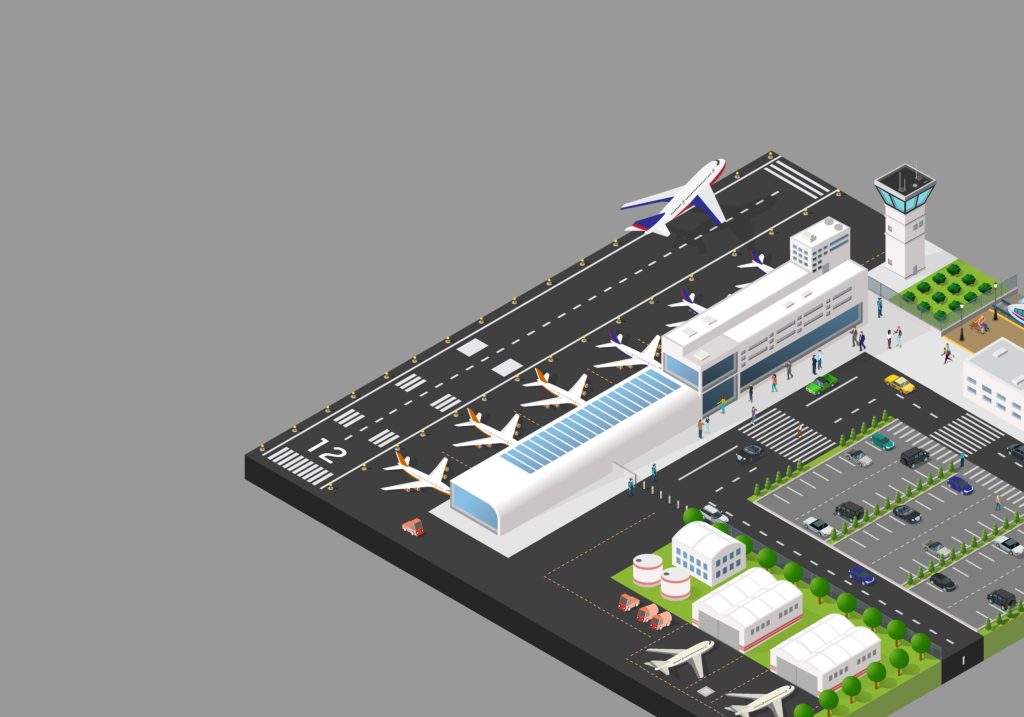Tech Strategies for Space Optimization Integrate Smart Solutions

Maximizing Your Space Efficiency with Technology
In the constantly evolving world of technology, finding innovative ways to utilize our spaces has become crucial. The integration of smart solutions not only enhances functionality but also promotes sustainability and efficiency. As we navigate the challenges of modern living and working environments, exploring tech strategies for space optimization can lead to more organized environments and improved productivity.
Modern solutions include a variety of approaches that can be implemented in both residential and commercial spaces:
- Smart Sensors: These devices monitor space usage in real-time, providing invaluable data. For example, occupancy sensors can track how many people are in a room and adjust lighting and heating accordingly, leading to energy savings. In an office setting, these sensors can help identify under-utilized spaces, guiding furniture rearrangement or redesign to improve workflow.
- Automated Storage Systems: These systems revolutionize how we manage and store items. Automated shelving can be programmed to retrieve and organize products, streamlining warehouse operations. Retail businesses can benefit tremendously by using these systems to reduce clutter and improve inventory management, ultimately enhancing the shopping experience.
- Data Analytics: Tools that provide comprehensive data analysis of space usage influence design decisions significantly. For example, analytics software can draw insights from foot traffic in retail environments, helping managers understand which areas attract more visitors, allowing for better product placement and displays.
These strategies are designed to address various challenges, including:
- Limited physical space in urban areas, where real estate is at a premium and every square foot counts.
- High operational costs associated with heating, cooling, and lighting large, underutilized spaces.
- The need for flexible workspaces in businesses as companies adopt hybrid models, requiring adaptable environments for collaboration and individual work.
As we delve deeper into these innovative solutions, we uncover how they transform ordinary spaces into optimized environments. For instance, smart office designs that incorporate flexible meeting rooms with adjustable layouts not only accommodate collaboration but also save resources by minimizing energy usage when rooms are not in use.
Implementing these cutting-edge tech strategies can pave the way toward maximizing your space’s potential while integrating sustainability into daily operations. As we embrace the future of space optimization, it becomes clear that technology is the key to unlocking possibilities in even the most confined environments.

CHECK OUT: Click here to explore more
Innovative Technologies Revolutionizing Spatial Management
The landscape of spatial management is rapidly transforming as innovative tech strategies for space optimization gain momentum. These advanced solutions are not merely a trend; they represent a paradigm shift in how both residential and commercial spaces are utilized. With a focus on efficiency, comfort, and sustainability, technologies have emerged that allow users to rethink their spatial layouts and usage.
A major component driving this transformation is the adoption of smart home and office technology. This wave begins with the integration of Internet of Things (IoT) devices that communicate effortlessly with each other, creating a cohesive system aimed at maximizing space efficiency. Below are key areas where these technologies are making significant impacts:
- Smart Lighting Solutions: By using IoT-enabled lighting systems, spaces can automatically adjust based on occupancy and natural light availability. These systems can save energy costs while providing a more comfortable atmosphere, particularly in large commercial spaces where areas may remain vacant for long periods.
- Modular Furniture: Furniture designs that adapt easily allow for flexible workspaces. Tables and chairs that can be reconfigured for collaboration or individual tasks not only optimize space but also encourage a dynamic work culture. This adaptability is especially beneficial for businesses embracing hybrid work models.
- Virtual and Augmented Reality (VR/AR): VR and AR technologies offer immense possibilities for spatial design. Before committing to physical changes, businesses can use these tools to visualize how new layouts or furniture arrangements will impact space usage. This capability significantly reduces the risk of misallocation of resources.
Additionally, implementing tech strategies for space optimization is not just about increasing efficiency—it is also about creating a better quality of life. For instance, smart thermostats can be programmed to intelligently regulate temperature based on room occupancy, leading to both comfort and energy savings. Similarly, smart irrigation systems in limited outdoor spaces can optimize water usage, maintaining greenery while conserving resources.
With these technologies, businesses and homeowners can tackle the major challenges of modern living and working environments, including:
- Managing space in increasingly urbanized areas, where high demand fights for limited availability.
- Rising costs associated with maintaining underused buildings, especially in large commercial entities.
- Providing flexibility in rapidly changing work environments, where space requirements shift regularly due to evolving team dynamics.
These smart solutions empower organizations and individuals alike to tailor their environments to their specific needs, illustrating that effective space optimization is possible through technology. As we delve deeper into these strategies, it will become evident how these innovations are ushering in a new era of spatial management, paving the way for smarter, more efficient living and working spaces.
| Advantages | Description |
|---|---|
| Enhanced Efficiency | Integration of smart solutions leads to improved utilization of space, minimizing wasted areas and optimizing layout. |
| Cost Savings | By reducing the need for extensive remodeling and leveraging technology, businesses can significantly lower operational costs. |
| Flexibility | Smart solutions allow for easy adjustments in workspace configurations, adapting to changing business needs quickly. |
| Improved Sustainability | Utilizing tech strategies promotes eco-friendly practices and contributes to lower carbon footprints. |
In the realm of “Tech Strategies for Space Optimization Integrate Smart Solutions,” the advantages outlined above play a crucial role. Enhanced efficiency is a primary benefit; by leveraging innovative designs and IoT devices, companies can streamline their operations. Additionally, the financial implications cannot be underestimated: cost savings realized through efficient space usage enable reinvestment into other areas of the business.Flexibility is another significant advantage. Smart solutions provide companies with the ability to reconfigure their spaces with minimal effort, such as mobile workstations or adaptive furniture systems that cater to varied work needs. This innovation leads to a more dynamic and responsive business environment.Furthermore, improved sustainability efforts through eco-friendly technologies contribute positively to the larger environment, making brands more appealing to environmentally conscious consumers. With each of these advantages interconnected, organizations are encouraged to explore how tech strategies can revolutionize their approach to space and resources.
CHECK OUT: Click here to explore more
Harnessing Data for Enhanced Spatial Solutions
The ability to leverage data is becoming a cornerstone of effective tech strategies for space optimization. With advancements in data analytics and machine learning, organizations can now analyze usage patterns and behaviors within a space, leading to more informed decisions in spatial management. Here are key aspects of how data-driven approaches are optimizing space utilization:
- Predictive Analytics: This technology employs historical usage data to forecast future space requirements. By understanding trends—such as peak times for occupancy in commercial buildings—businesses can strategically plan for capacity, reallocate resources, and reduce wastage. For example, major tech companies are utilizing predictive analytics to determine when to open or extend office spaces based on employee attendance patterns.
- Space Utilization Sensors: These IoT-based sensors are installed throughout buildings to continuously monitor how spaces are being used. The data collected provides real-time insights, allowing organizations to quickly identify underutilized areas that can be repurposed or reconfigured. This transparency contributes directly to smarter space management and ultimately reduces costs associated with maintenance of excessive square footage.
- Integrated Facilities Management Software: With comprehensive platforms that centralize data from various operations—including maintenance, lighting, and HVAC—facility managers can streamline operations and enhance agility. For instance, some organizations use software that integrates data from their smart systems to optimize energy consumption, automatically adjusting based on building occupancy levels, thereby resulting in significant energy savings.
Moreover, a growing trend in space optimization is the implementation of flexible workspaces, which are largely driven by data analytics. The rise of remote work and hybrid work models necessitates adaptable office environments. Companies are now investing in technologies like hot-desking—where employees book their desks on a per-visit basis—further supported by analytics that inform which areas are most in demand. This not only conserves office space but also improves employee satisfaction by providing more personalized and appealing work environments.
Creating Sustainable Environments with Smart Technology
As environmental concerns become increasingly prominent, integrating sustainability within spatial management is essential. Smart solutions can not only enhance **space efficiency** but also contribute to a greener future. One such approach involves utilizing energy-efficient systems such as smart HVAC and lighting controls. These systems are designed to minimize energy consumption while maintaining optimal comfort levels, which can result in substantial reductions in energy bills over time.
Additionally, the concept of regenerative design—an architectural philosophy aimed at creating systems that improve environmental conditions—is gaining traction in the realm of space optimization. Utilizing renewable energy sources like solar panels in building designs not only generates power but also enhances the value of the property. Similarly, implementing rainwater harvesting systems in urban spaces can significantly reduce water usage, allowing for a sustainable and efficient use of limited resources.
Furthermore, the adoption of green building certifications, such as LEED (Leadership in Energy and Environmental Design), encourages the incorporation of smart solutions into new constructions and renovations. These advancements reflect a holistic approach to construction, integrating technology that not only optimizes space but also reduces environmental impact.
As technology continues to enhance our understanding and utilization of space, it is clear that these smart solutions are more than just conveniences; they are essential tools in creating adaptable, efficient, and sustainable environments for the future.
CHECK OUT: Click here to explore more
Conclusion: Innovating the Future of Space Optimization
In an increasingly complex world, tech strategies for space optimization are emerging as vital components for organizations looking to thrive while minimizing their ecological impact. The integration of smart solutions—ranging from predictive analytics and IoT sensors to energy-efficient systems—reveals new pathways for attaining not just efficiency, but sustainability. These technologies empower organizations to make data-informed decisions that enhance spatial management and reduce operational costs.
As we embrace remote and hybrid work modalities, the move towards flexible workspaces strengthens the need for adaptable designs that prioritize employee well-being, optimizing the use of valuable real estate. Companies utilizing systems such as hot-desking not only cater to contemporary work styles but also ensure the effective use of shared spaces, proving that less can indeed be more.
Furthermore, the adoption of sustainable practices through initiatives like regenerative design and certification programs such as LEED reflects a commitment to future-proofing buildings while conserving resources. By harnessing renewable energy and implementing smart water systems, stakeholders can cultivate environments that benefit both occupants and the planet.
As we look ahead, it is crucial for businesses and organizations to continue exploring these innovations in the realm of space optimization. The future depends not only on efficiently utilizing our surroundings but also on integrating smart solutions that lead us toward a more sustainable and prosperous environment. Let us seize this opportunity to investigate deeper into the possibilities that technology offers, encouraging a collaborative effort for a smarter, greener tomorrow.


